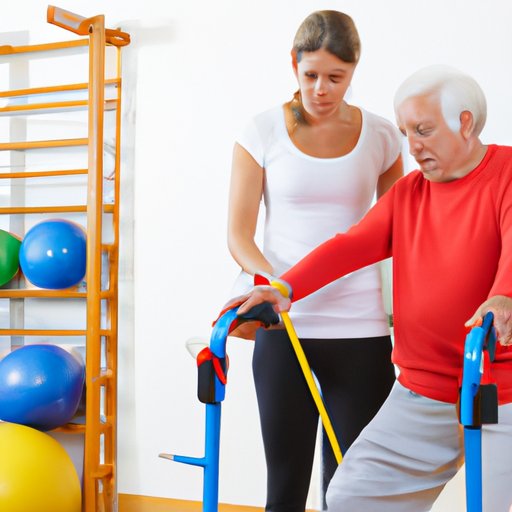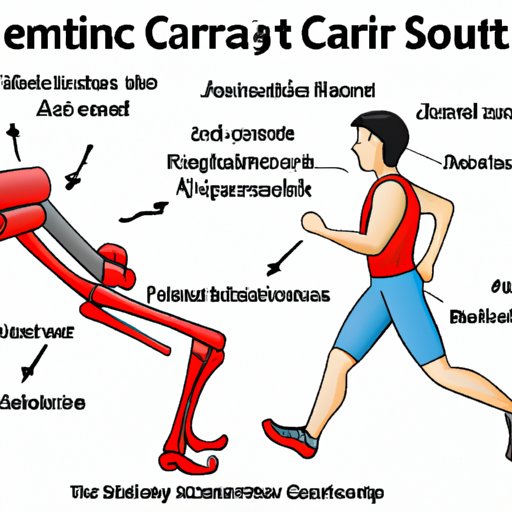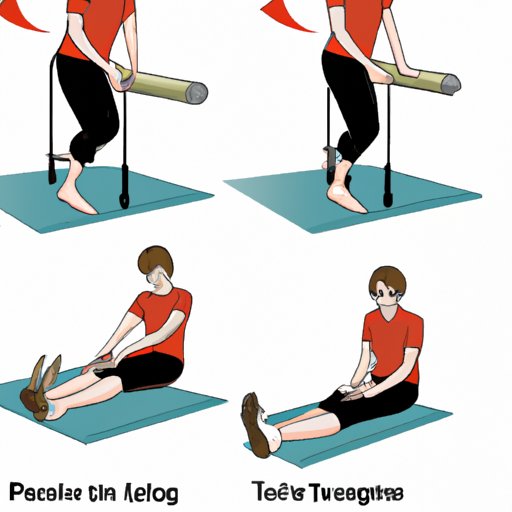Introduction
Joints are the connection points between two bones in the body. They provide support for movement and allow us to do everyday activities such as walking, running, and even writing. While joints are essential for our bodies to function properly, they can also be prone to injury and pain. That’s why it’s important to understand the effect of exercise and physical activity on joint health.
Analyzing the Benefits of Exercise on Joints: A Review of Studies
Exercise is generally beneficial for our overall health, but there are specific ways that it affects our joints. Studies have found that regular exercise can improve joint flexibility, strength, and range of motion, which ultimately helps reduce the risk of injury and pain.
Benefits of Exercise on Joints
The benefits of exercise on joints include improved flexibility, strength, and range of motion. Regular exercise can help prevent joint pain and stiffness, as well as reduce inflammation. It can also help strengthen the muscles and ligaments surrounding the joint, providing additional support and stability.
Types of Exercises Most Beneficial to Joints
Low-impact exercises such as swimming, cycling, and yoga are some of the best options for improving joint health. These types of exercises put less strain on your joints while still allowing you to get a good workout. Strength training is also beneficial, as it helps build strong muscles around the joint, which can help protect it from injury. Walking, jogging, and other aerobic activities are also beneficial, as they can improve your cardiovascular health and reduce inflammation throughout your body.

Exploring the Impact of Physical Activity on Joint Health
Physical activity can be beneficial for joint health, but it can also be harmful if done incorrectly or too often. It’s important to understand how physical activity affects joints so you can make sure you’re exercising safely and effectively.
How Physical Activity Affects Joints
Physical activity can cause wear and tear on your joints over time, especially if you’re engaging in high-impact activities such as running or jumping. The repetitive motions involved in these activities can lead to joint inflammation and pain if done too often or without proper form. On the other hand, low-impact activities such as walking and swimming can help improve joint health by strengthening the muscles around the joint and increasing flexibility.
The Positive Impact of Exercise on Joints
Regular exercise can help reduce stress on your joints, which can help prevent injury and pain. Exercise can also help improve joint flexibility and range of motion, which can reduce the risk of developing osteoarthritis. Additionally, exercise can help reduce inflammation and improve circulation, both of which can help improve joint health.
Potential Negative Outcomes from Exercise
While exercise can be beneficial for your joints, it can also cause harm if done improperly or too often. If you’re engaging in high-impact activities such as running or jumping, it’s important to ensure that you’re using proper form and taking breaks when needed. Additionally, if you’re dealing with an existing joint injury or condition, it’s important to speak with your doctor before beginning any new exercise routine.

Examining the Effect of Exercise on Joints and Mobility
Exercise can help improve joint mobility, but certain types of exercises should be avoided. Understanding which exercises are most beneficial for joint health is key to avoiding potential injuries and pain.
Improving Joint Mobility With Exercise
Exercises such as stretching, yoga, and Pilates can help improve joint mobility by increasing flexibility and range of motion. Strength training can also be beneficial, as it can help strengthen the muscles and ligaments surrounding the joint. Swimming, cycling, and walking are also great options for improving joint mobility, as they’re low-impact activities that don’t put too much strain on the joints.
Exercises to Avoid for Joints
High-impact activities such as running and jumping should be avoided if possible, as they can put excessive strain on the joints. Additionally, exercises that involve twisting or jerking motions can be harmful to joints, as these can cause injury or pain. Finally, it’s important to avoid lifting heavy weights, as this can put too much strain on the joints.
Investigating the Relationship Between Exercise and Joint Pain
Exercise can be beneficial for joint pain, but it’s important to understand the causes of joint pain before beginning any new exercise routine.
Causes of Joint Pain
Joint pain can be caused by a variety of factors, including age, injury, and arthritis. Other common causes of joint pain include overuse, poor posture, and muscle weakness. It’s important to identify the cause of your joint pain before beginning any new exercise routine, as this will help you determine which exercises are most beneficial for your particular situation.
How Exercise Can Help Reduce Joint Pain
Exercise can be beneficial for joint pain, as it can help improve flexibility, strength, and range of motion. Low-impact exercises such as swimming, cycling, and walking are especially beneficial, as they can help reduce the stress on the joints while still providing a good workout. Additionally, strength training can help build strong muscles around the joint, which can help reduce pain and improve stability.

Understanding How Exercise Impacts Joints and Cartilage
Cartilage is the tissue that lines the joints and provides cushioning for them. It’s important to understand how exercise affects cartilage in order to ensure that you’re exercising safely and effectively.
What is Cartilage?
Cartilage is a type of connective tissue that lines the joints and provides cushioning for them. It helps absorb shock and provides lubrication for the joints, allowing them to move more freely. Over time, cartilage can become worn down due to age, injury, and overuse, leading to joint pain and stiffness.
How Exercise Affects Cartilage
Exercise can be beneficial for cartilage health, as it can help improve circulation and reduce inflammation. Low-impact exercises such as swimming and cycling are especially beneficial, as they can help reduce the stress on the joints while still allowing you to get a good workout. Additionally, strength training can help build strong muscles around the joint, which can help protect the cartilage from damage.
Conclusion
Exercise can be beneficial for joint health, but it’s important to understand how it impacts joints and cartilage. Regular exercise can help improve flexibility, strength, and range of motion, which can help reduce the risk of injury and pain. Additionally, it can help reduce inflammation and improve circulation, both of which can help improve joint health. However, it’s important to understand which exercises are most beneficial for joints and which should be avoided, in order to ensure that you’re exercising safely and effectively.
Summary of Findings
Exercise can be beneficial for joint health, as it can help improve flexibility, strength, and range of motion. Low-impact exercises such as swimming, cycling, and yoga are some of the best options for improving joint health. Additionally, strength training can help build strong muscles around the joint, which can help protect it from injury. It’s important to understand which exercises are most beneficial for joints, as well as how exercise affects cartilage, in order to ensure that you’re exercising safely and effectively.
Final Thoughts
Exercising regularly can be beneficial for joint health, but it’s important to understand how it impacts your joints and cartilage. By understanding the effect of exercise and physical activity on joint health, you can make sure you’re exercising safely and effectively in order to reduce the risk of injury and pain.
(Note: Is this article not meeting your expectations? Do you have knowledge or insights to share? Unlock new opportunities and expand your reach by joining our authors team. Click Registration to join us and share your expertise with our readers.)
